Looking to expand your garden with the vibrant Orange Bird of Paradise? This guide is your ticket to success in bird of paradise propagation. I’ll walk you through the process, making it easy to grow this stunning plant and fill your space with its tropical charm.
Discover the secrets of planting, caring for, and enjoying the Orange Bird of Paradise. I’ll cover the ideal soil conditions, the perfect amount of sunlight, and how to keep your plant healthy and blooming. Whether you’re a seasoned gardener or just starting, you’ll find valuable tips here.
Ever wondered how to create a lush, tropical garden at home? Bird of paradise propagation could be the key to transforming your outdoor space or adding life to your indoor environment. Join me as I explore the simple yet rewarding journey of growing this iconic plant.
- Related article: Different Bird of Paradise Varieties
7 Key Takeaways on Orange Bird of Paradise
- The Orange Bird of Paradise, also known as Strelitzia reginae, comes from South Africa. It boasts vibrant orange and blue bird-shaped flowers resembling a crane.
- The Orange Bird of Paradise is a tropical plant that thrives in well-drained soil and requires ample sunlight. This makes it suitable for gardens or well-lit indoor spaces.
- Regular watering and maintaining high humidity levels are important, especially during the spring and summer, to ensure healthy growth.
- Selective pruning removes old or damaged foliage. Weekly fertilization during the growing season supports robust growth and vibrant blooms.
- Propagation is best achieved through root division, although seeds can also be used with proper care.
- Despite its resilience, the Orange Bird of Paradise is vulnerable to pests like scale insects and diseases like gray mold. This requires vigilance and prompt treatment.
- While toxic to pets, the Orange Bird of Paradise is generally low-maintenance and adds exotic elegance to any setting.
What Is the Orange Bird of Paradise Plant?
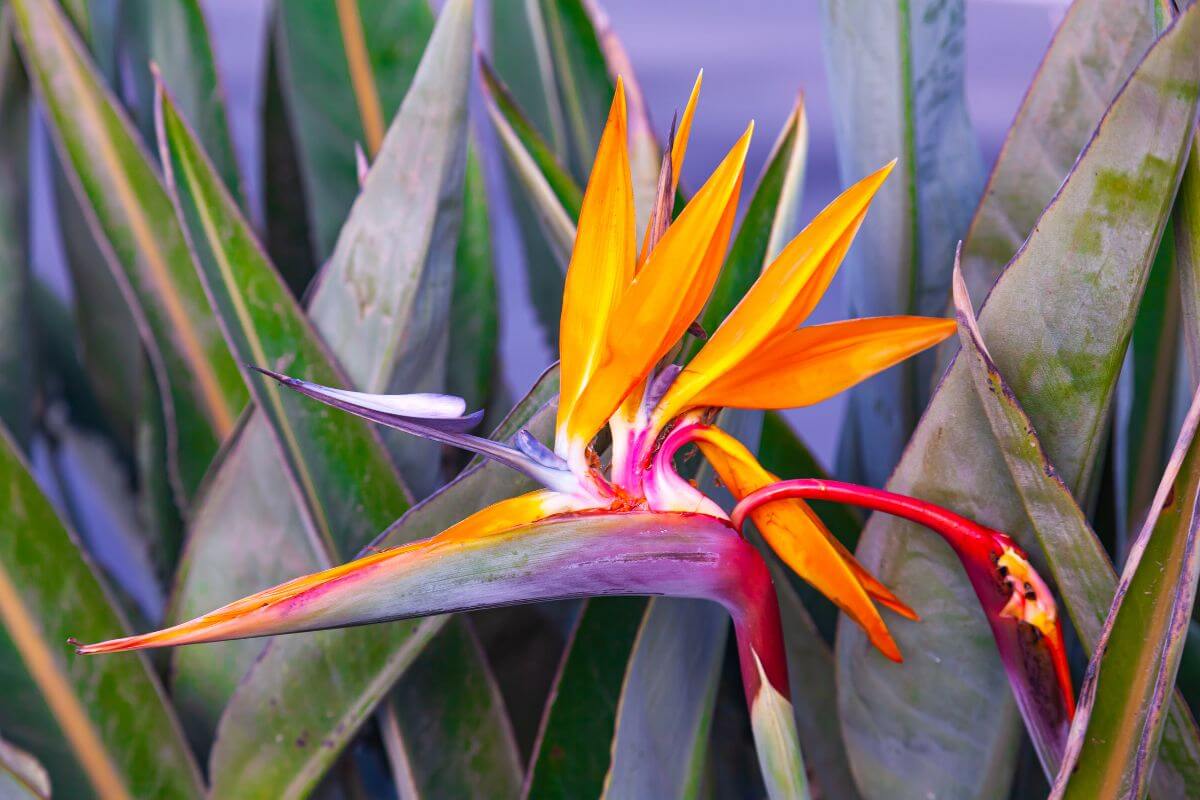
The Orange Bird of Paradise, also called Strelitzia reginae, comes from sunny South Africa. Its bright orange and blue flowers look like a flying bird. It’s striking in gardens or indoors, bringing a bit of exotic beauty wherever it’s planted.
This plant loves sunlight and gives beautiful flowers and leaves if you take care of it right. It looks a bit like a banana plant, with strong stems and wide leaves, adding to its tropical vibe.
Gardeners like that it’s usually safe from deer, though this can vary. But overall, it’s easy to care for and makes any space feel a bit more tropical.
Orange Bird of Paradise Varieties
There are many varieties of orange bird of paradise plants available. Some varieties of these include:
- Strelitzia reginae Ovata – Its leaves are heart-shaped to ovate and can be up to 20 inches long. They have short stalks. This variety is trunkless and grows as a clumping, evergreen plant.
- Strelitzia reginae Pygmaea – an orange cultivar that grows only to about three feet in height. The flowers are long-lasting, orange, and shaped like tropical birds. The foliage is evergreen.
- Strelitzia reginae Glauca – The crested flowers have three bright orange sepals and three blue petals, resembling a bird’s head. The foliage consists of large, broadly oval, long-stalked, gray-green leaves.
Orange Bird of Paradise Care Guide
This is an evergreen perennial that is generally identified for cultivation in warmer climates, but it can be cultivated in USDA Hardiness zones 9 through 11.
It is commonly seen in Southern California where it is the official flower of Los Angeles.
However, in the U.S., Bird of Paradise plants are popular as houseplants. These plants will grow as high as five to six feet tall.
Orange Bird of Paradise Soil Requirements
Orange Birds of Paradise has specific soil requirements for both indoor and outdoor gardens.
Orange Bird of Paradise Outdoor Soil Requirements
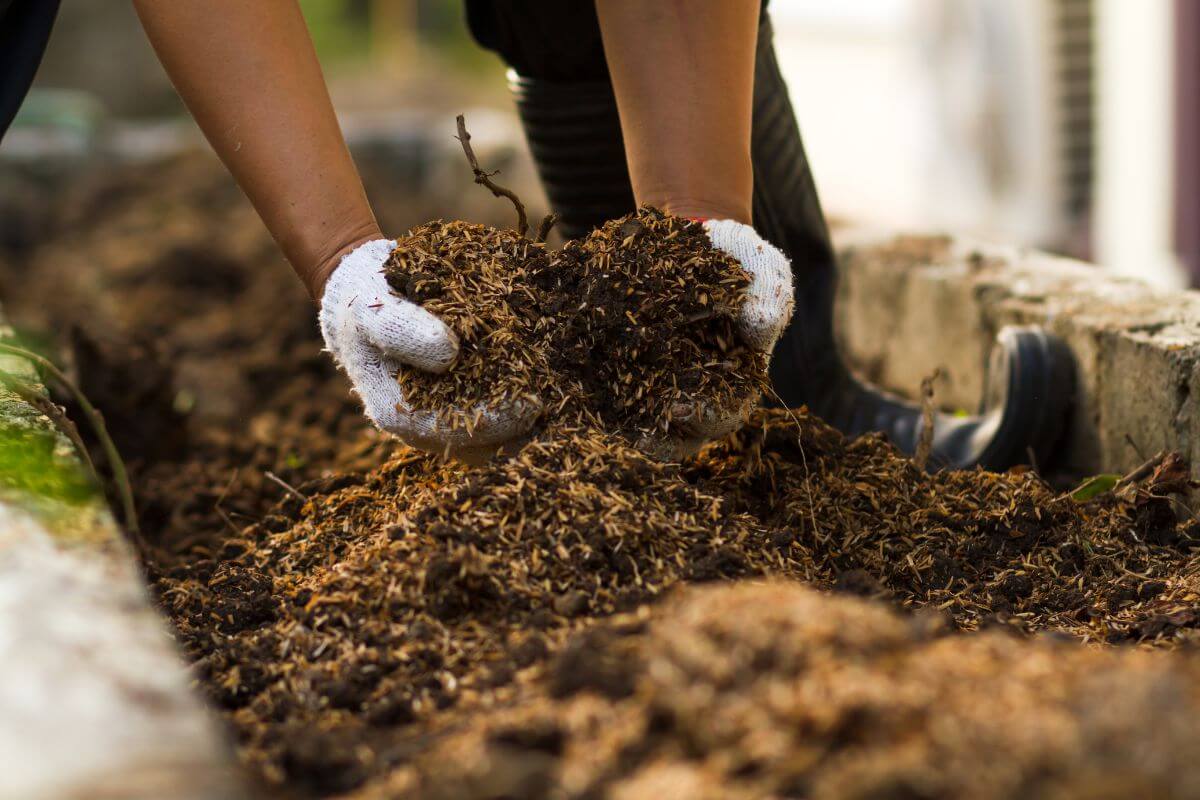
This plant grows best in well-drained soil that is rich in organic matter. Amend the soil before planting with compost and a bit of slow-release fertilizer. Add ingredients such as perlite or lava rocks into the soil mix as needed to improve soil aeration.
If you are planting it in your outdoor garden, you need to prepare a hole in the soil bed that is twice the size of the root ball. Position your plant in the hole and then fill it in with the rich soil.
Orange Bird of Paradise Indoor Soil Requirements
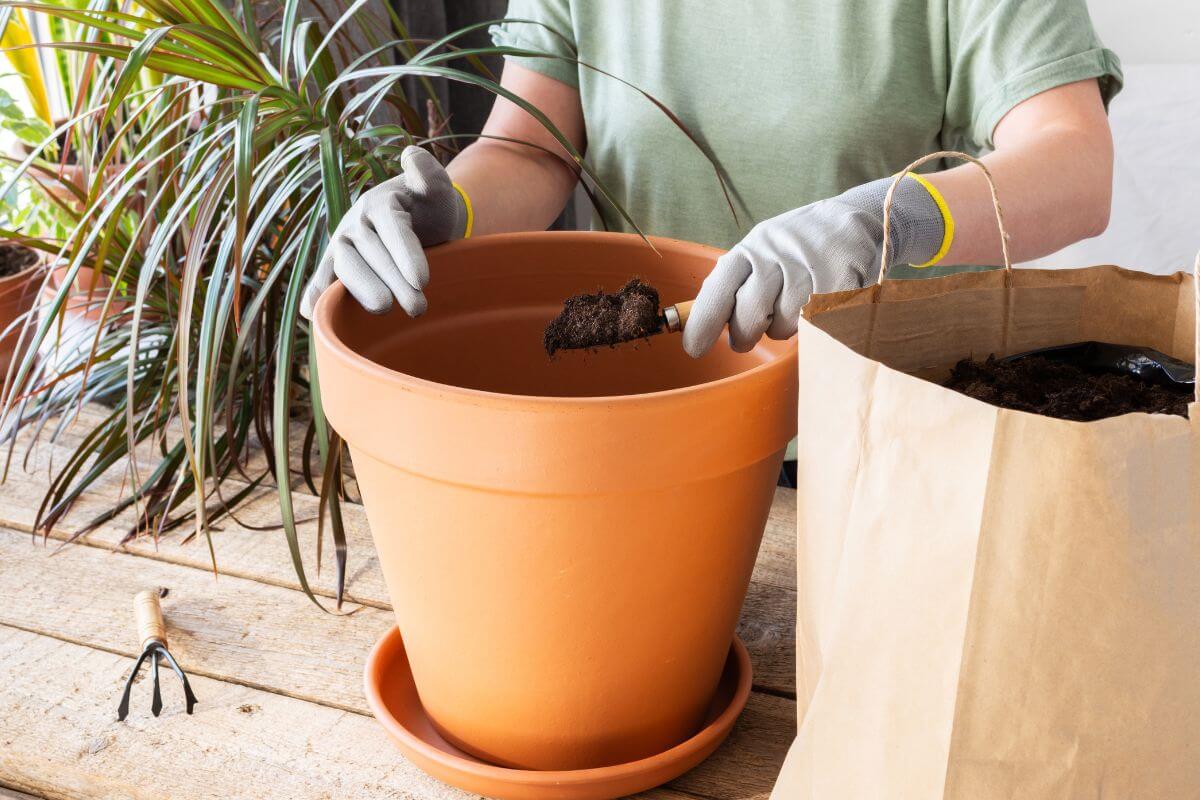
Rich, fertile, well-draining potting mix or potting soil mixed with compost will be optimal for an indoor plant. Pots and containers need to have a good number of drainage holes to allow excess water to drain out through and create a moist, loamy soil.
Containers should be an inch or two larger than the size of the root ball.
Orange Bird of Paradise Light Requirements
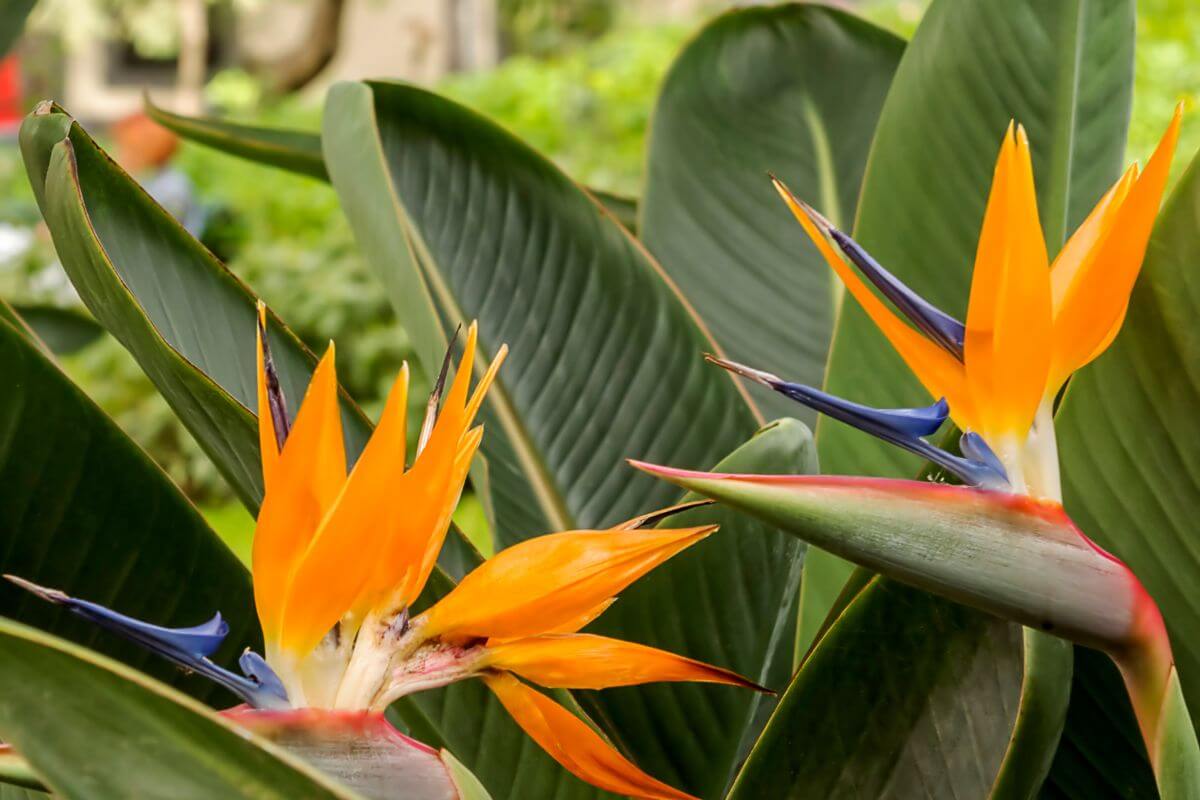
The Bird of Paradise prefers full sun, but will still do well in partial shade.
When cultivated indoors, they require bright light with some exposure to direct sunlight to promote flowering. Your plant should be shielded from the noon sun to protect the foliage from scorching.
Orange Bird Water and Humidity Requirements
When it comes to water and humidity requirements for Orange Birds of Paradise, there are variations between indoor and outdoor settings.
Water and Humidity for Outdoors
When planting your Bird of Paradise outdoors, water it for the first several months to keep the soil moist. These plants like humid conditions, similar to their native environments.
Water and Humidity for Indoors
When cultivating the Bird of Paradise as a houseplant, the soil bed needs to be consistently moist but never waterlogged.
During the spring and summer growing seasons, you may need to water almost daily because the large foliage will transpire moisture. Soak your plant and allow it to drain, but never leave this plant sitting in water.
As a tropical plant it likes high humidity levels, so misting regularly is a good idea.
Orange Bird of Paradise Temperature Requirements
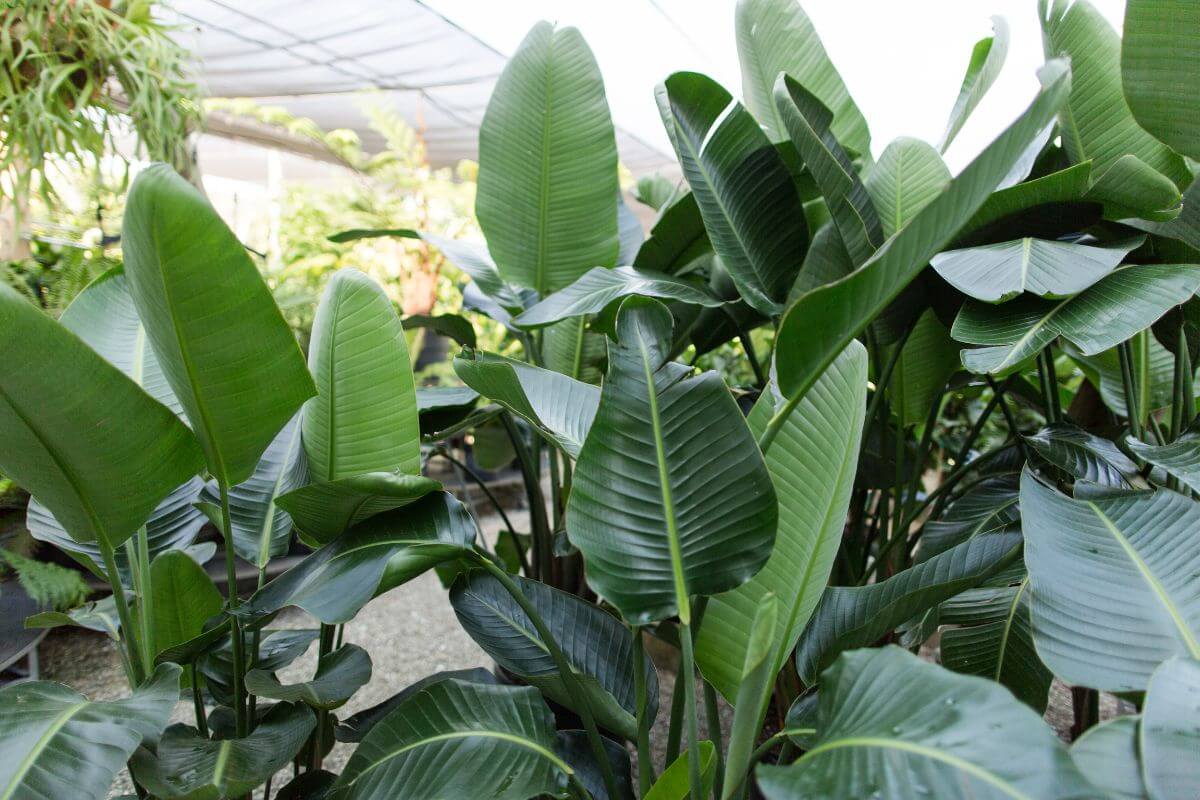
The Bird of Paradise likes warm climates. It needs temperatures that measure above 60° Fahrenheit during the winter season, as it does not tolerate cold weather. When exposed to frost, it recovers very slowly.
If you are cultivating your potted plant outdoors, bring it inside during the winter unless the temperature dips rarely. If you live in a warmer climate, cut down your plants to a foot above the soil bed surface.
Cover the area around your plant with mulch and straw. Cover the entire area and plant with material such as that used in row covers and fix it to the ground. Once the last frost has passed in the spring, uncover everything.
Orange Bird of Paradise Fertilizers
Choose a general-purpose or liquid fertilizer for your Orange Bird of Paradise plant. Fertilize monthly, following package directions to prevent overfeeding. For best growth and flowering, look for a balanced fertilizer with a 1:1:1 NPK ratio like the Triple 10 All Purpose Liquid Fertilizer.
- Learn more about the Best Bird of Paradise Fertilizer
How to Help Your Orange Bird of Paradise Flower
When Birds of Paradise mature to four years of age, they will be ready to flower. To aid in blooming, keep your plant a bit rootbound and give it at least six hours of full sunlight daily.
One reason these plants don’t bloom is a lack of light. The soil bed needs to be kept consistently moist to encourage flowering during the growing season.
How to Prune Your Orange Bird of Paradise
The blooms on this plant will last approximately three weeks before fading and dying. Old or damaged foliage should be removed by pulling dead leaves or trimming them off with sharp sterilized garden shears. If leaves are healthy, avoid pruning.
If your plant is large and needs substantial pruning, do so in the spring using a pruning saw or similar. All foliage and stems can be cut to an inch or so above the ground.
If you find your plant to be bushy and crowded, trim off selected stems.
How to Repot Your Orange Bird of Paradise
The Orange Bird of Paradise needs direct sunlight and well-draining soil to bloom. It likes bright, indirect light but also some direct sun for flowers.
Keeping it a bit rootbound helps it bloom more. But don’t let it get too cramped, which can stress it.
For a healthy Orange Bird of Paradise, control pests regularly. Rinse it, wipe leaves with rubbing alcohol, or use insecticidal soap. Pests multiply fast, so keep at it.
Only repot if roots are coming out of the pot’s bottom. Split the plant if it’s crowded or you want more. But if it looks good, no need to repot or split.
How to Propagate Your Orange Bird of Paradise
The easiest and the best bird of paradise propagation method is through root division. You can also grow these plants from seed, but the division method will be much more rapid.
Propagating Orange Birds of Paradise by Root Division
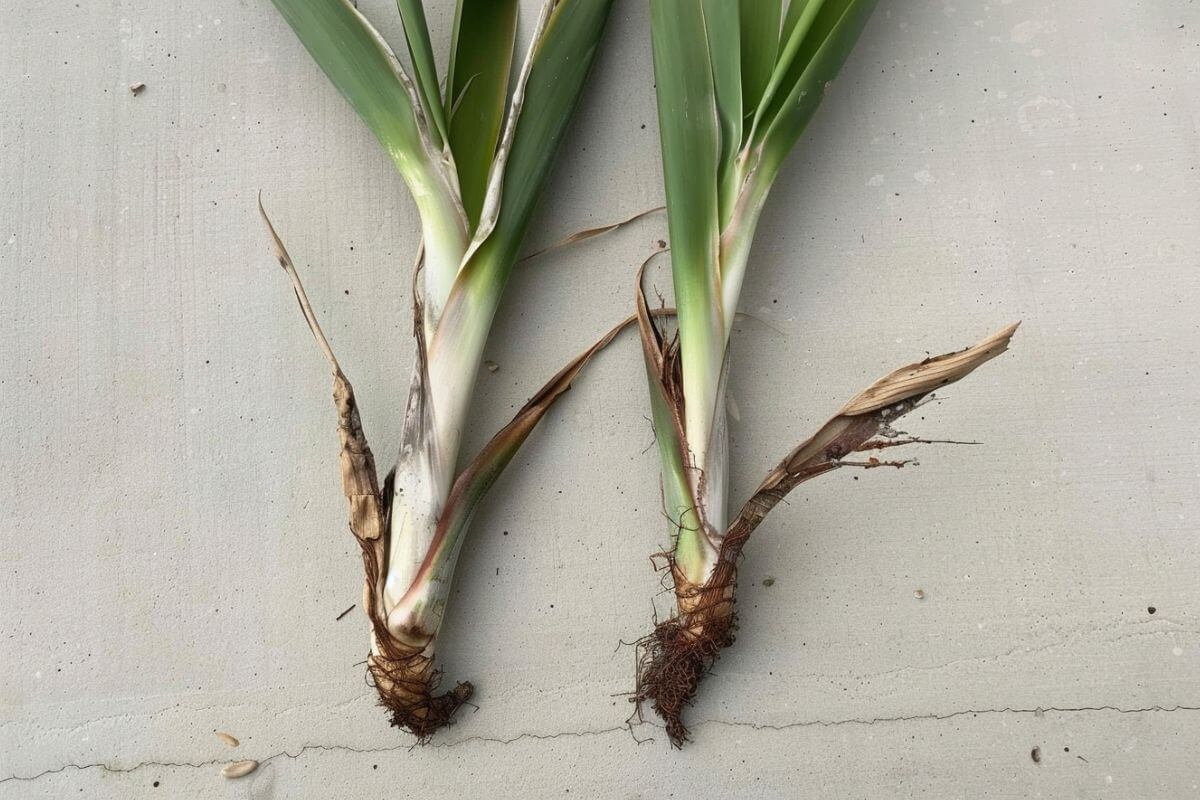
For propagation by root division, choose a mature plant that has already produced flowers for at least three consecutive years.
If you are dividing an outdoor plant, you’ll need the right-sized gardening tools to manage the division of the plant.
If you are dividing a houseplant, a gardening knife will suffice because they’re smaller. For a houseplant division, prepare a container with fresh potting soil.
- Remove offshoots at the base of your plant with at least three leaves.
- Using a knife or similar, divide the underground rhizome.
- Repot in a new container or a new hole in your garden.
Propagating Orange Birds of Paradise by Seed
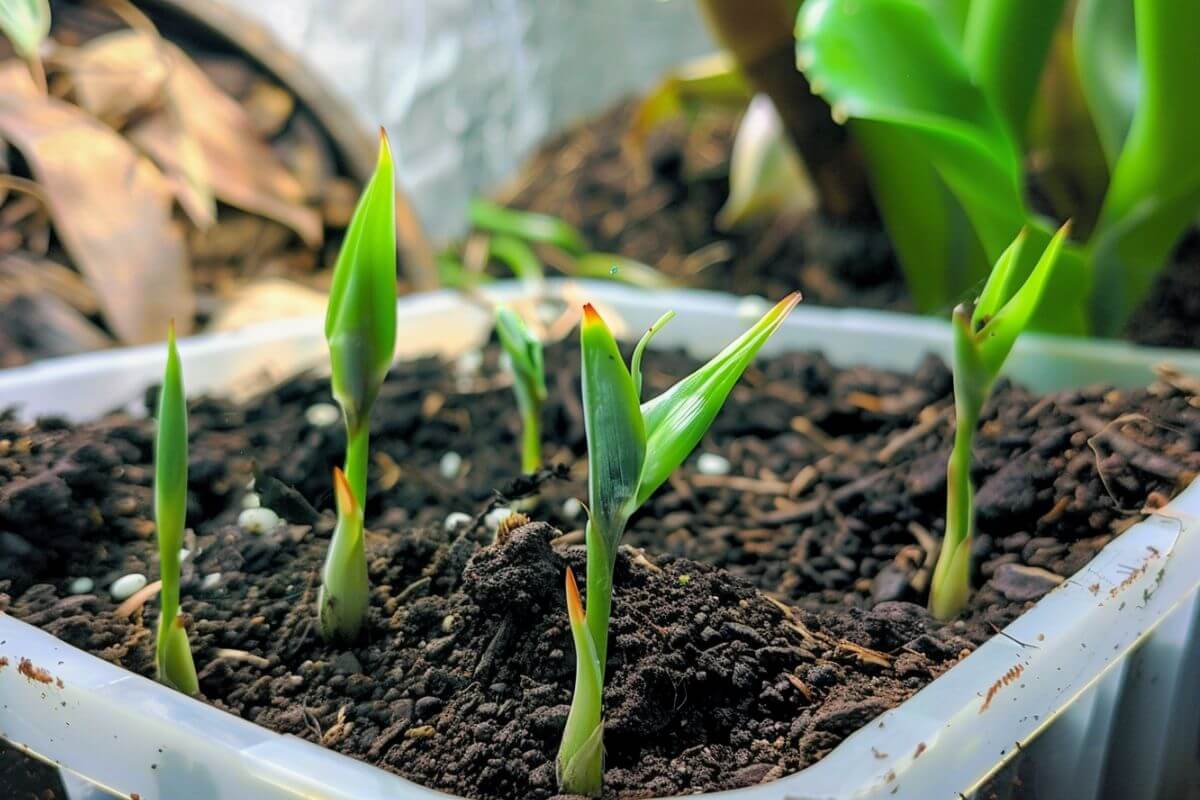
- Soak plant seeds for 24 to 48 hours before planting. Remove any stringy orange debris that is attached. Nick seeds with a knife tip or nail file.
- Plant seeds approximately an inch deep in a well-draining potting mix. Seeds should have ample space with each other, at least three inches apart.
- Place the container in a warm room at roughly 80°F with indirect light. Cover the container with plastic wrap to keep the soil moist.
- After the seeds germinate and the seedlings develop three leaves, you can transplant the plantlet into a small pot about six inches in diameter.
- When your plant grows to at least six inches, you can transplant it to a more permanent location.
Orange Bird of Paradise Toxicity and Pets
According to the ASPCA – American Society for the Prevention of Cruelty to Animals, this plant is toxic to cats and dogs. The irritants contained in its seeds and fruits can cause:
- Drowsiness
- Mild nausea
- Vomiting
In case of ingestion, contact your veterinarian.
Orange Bird of Paradise Pests, Diseases, and Problems
Fortunately, the Orange Bird of Paradise doesn’t have many issues to deal with. That said, there are some common challenges you may have to face when growing this particular plant.
1. Orange Birds of Paradise Pests
Common pests to watch for if you are cultivating a Bird of Paradise as a houseplant include scale insects, aphids, and whiteflies.
Check underneath the foliage and apply insecticidal soap if you find evidence of a pest infestation.
2. Orange Birds of Paradise Diseases
The Bird of Paradise is susceptible to Botrytis cinerea or gray mold. Foliage and blooms will develop dark spots together with a covering of gray mold. Remove all infected parts of the plant and then move the plant to a location with increased air circulation.
Root rot is also a risk when overwatered. If roots are allowed to sit in water, a fungus may form and cause the root system to rot, killing the plant.
Some affected plants can be saved by removing the plant from the soil bed and removing any infected roots. Rinse off healthy roots and apply a fungicide, then repot in fresh potting mix.
3. Orange Birds of Paradise Curling Leaves
Curling leaves on Bird of Paradise may result from intense sunlight, underwatering, or pests like mealybugs or spider mites.
If the plant has been indoors, it needs gradual acclimatization to direct sunlight. Check for pests regularly and treat them promptly.
Adjust watering sessions to prevent curling leaves. The soil shouldn’t stay consistently moist but should dry out between waterings. This balance is vital for the plant’s health and leaf condition.
4. Orange Birds of Paradise Yellowing Foliage
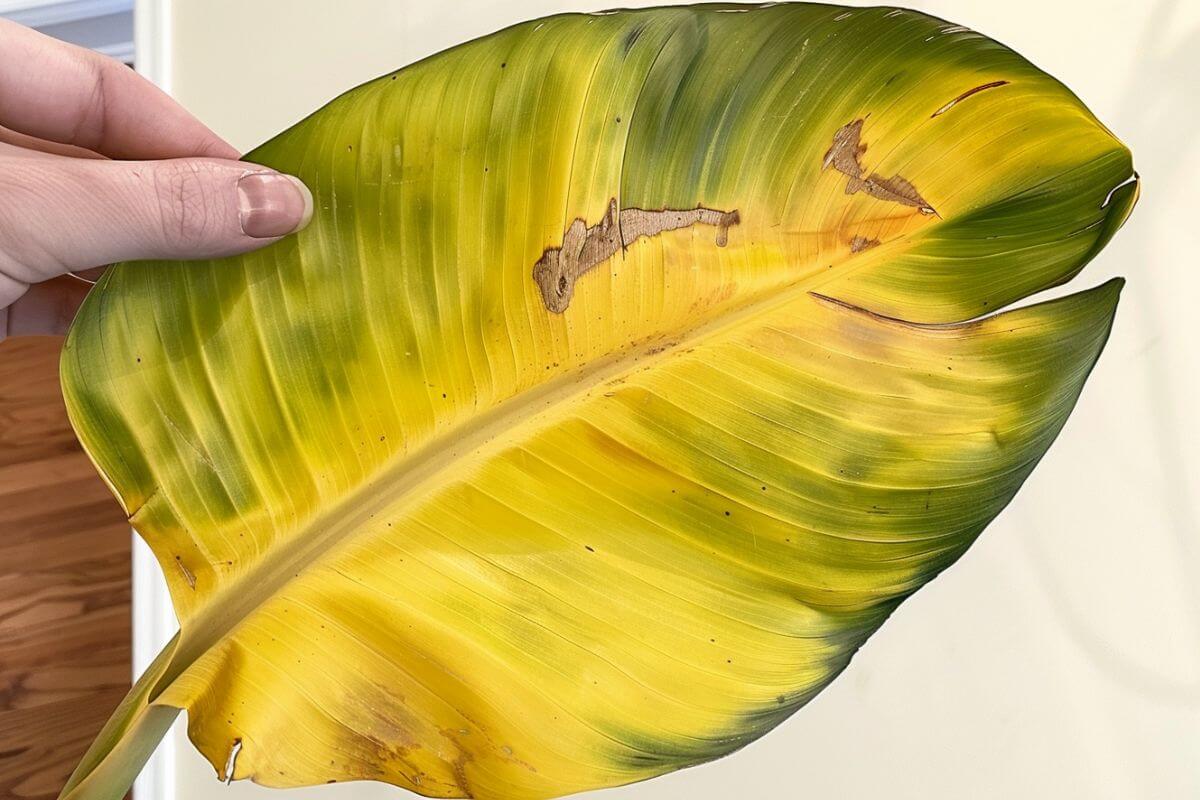
It’s common for the oldest leaves of the Bird of Paradise to yellow and dry up as new ones emerge.
If multiple leaves are turning yellow, it might signal overwatering and poor drainage. Regular pruning of yellow leaves is a recommended practice to maintain the plant’s health and appearance.
5. Orange Birds of Paradise Foliage With Breaks or Slits
Wrapping the stem with a moist paper towel during the unfurling stage can prevent breaks and splits. Low humidity can contribute to leaf splitting, so regular misting can help.
Leaf tears are normal and can add character to the plant, but Bird of Paradise leaves may split easily due to their size and structure, especially in high winds.
Orange Bird of Paradise Final Thoughts
The Orange Bird of Paradise is from South Africa and has pretty orange and blue flowers like birds. It grows well in sunny spots, both outside and inside. To keep it healthy, give it water regularly, trim it carefully, and feed it during growing times.
You can make more plants by splitting their roots or planting their seeds. But watch out for bugs and sickness, and keep it away from pets.
Growing the Orange Bird of Paradise is fun and pretty. It makes gardens and rooms look nice with its colorful flowers. Just remember to take good care of it so it stays healthy and happy for a long time.
Orange Bird of Paradise FAQs
1. How Tall Does Orange Bird of Paradise Get?
The orange bird of paradise can grow up to 6 feet tall with the proper care.
2. How Much Sun Does an Orange Bird of Paradise Need?
The orange bird of paradise needs 6 hours of full sun for best optimal growth. It will still grow in partial shade, but may not bloom. For flowers to bloom, it needs plenty of direct light.
3. What’s the Difference Between White and Orange Bird of Paradise?
The difference between the white and orange birds of paradise is the color of their sepals. The white bird of paradise has white sepals, while the orange bird of paradise has orange sepals. Another difference is their size. The white variety can grow up to 20 feet tall, while the orange variety will grow up to 6 feet tall.
4. How Fast Does the Orange Bird of Paradise Grow?
The orange bird of paradise can reach up to 6 feet tall in 3 to 4 years. They can grow up to 2 feet per year at that rate with proper care. Give it full sun, keep the soil moist, give it weekly feedings, and keep it in a warm and humid environment.
5. Can I Put My Bird of Paradise Outside in the Summer?
Yes, you can put the bird of paradise outside in the summer when the temperatures are warm. These plants prefer warmer temperatures and higher humidity. Be sure to water it and keep the soil moist.
6. How Do I Get My Orange Bird of Paradise to Bloom?
The most common reason the orange bird of paradise does not bloom is due to a lack of light. The bird of paradise needs 6 hours of full sun each day for it to bloom flowers. Keep the soil moist and ensure it’s not exposed to cold weather, and it will continue to offer blooms throughout its growing season.
7. Why Is Bird of Paradise Expensive?
The bird of paradise price is reflective of how old and mature the plants are. The plants that are 4 to 6 years old and bloom well are expensive because you will have beautiful and exotic flowers immediately. You won’t need to wait for the plants to mature. It’s similar to the price of bonsai trees and how they get more expensive as the bonsai ages.
For other Bird of Paradise articles, check out the following:



